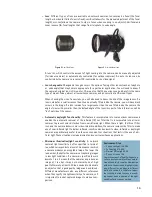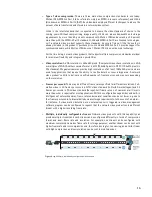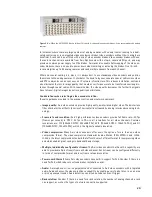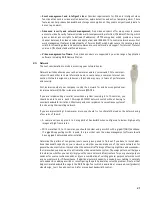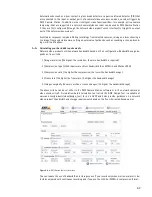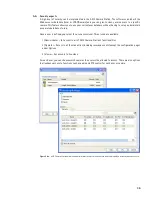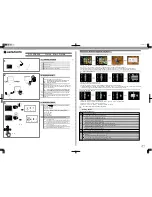
23
The type of video compression employed also effects storage calculations. The H.264 compression for-
mat is by far the most efficient video compression technique available today. Without compromising
image quality, an H.264 encoder can reduce the size of a digital video file by more than 80 percent
compared with the Motion JPEG format and as much as 50 percent more than with the MPEG-4 Part 2
(referred to simply as MPEG-4 in future references) standard. This means much less network bandwidth
and storage space are required for an H.264 video file. Or seen another way, much higher video quality
can be achieved for a given bit rate.
With Motion JPEG, storage requirements vary depending on the frame rate, resolution and degree of
compression. With H.264 and MPEG-4, bit rate is the key factor in determining the corresponding stor-
age requirements.
There is a clear formula for calculating storage requirements when it comes to Motion JPEG (see calcula-
tion below) because Motion JPEG consists of one individual file for each image. Calculations are not so
clear-cut for H.264 and MPEG-4 because of a number of variables that affect bit rate levels. However,
sample calculations for H.264 and MPEG-4 are also provided below:
H.264 calculation:
Bit rate / 8(bits in a byte) x 3600s = Kilobyte (KB) per hour / 1000 = Megabyte (MB) per hour
MB per hour x hours of operation per day / 1000 = Gigabyte (GB) per day
GB per day x requested period of storage = Storage need
(Note: The figures below are based on lots of motion in a scene. With fewer changes in a scene, the figures can be 20 percent lower.
The amount of motion in a scene can have a big impact on the amount of storage required.)
Total for the 3 cameras and 30 days of storage = 135 GB
MPEG-4 calculation:
Bit rate / 8(bits in a byte) x 3600s = KB per hour / 1000 = MB per hour
MB per hour x hours of operation per day / 1000 = GB per day
GB per day x requested period of storage = Storage need
(Note: The formula does not take into account the amount of motion, which is an important factor that can influence the size of
storage required.)
Total for the 3 cameras and 30 days of storage = 204 GB
Motion JPEG calculation:
Image size x frames per second x 3600s = KB per hour/1000 = MB per hour
MB per hour x hours of operation per day / 1000 = GB per day
GB per day x requested period of storage = Storage need
Total for the 3 cameras and 30 days of storage = 1002 GB
Camera
Resolution
Bit rate
(Kbit/s)
Frames per
second
MB/hour
Hours of
operation
GB/day
No. 1
CIF
110
5
49.5
8
0.4
No. 2
CIF
250
15
112.5
8
0.9
No. 3
4CIF
600
15
270
12
3.2
Camera
Resolution
Bit rate
(Kbit/s)
Frames per
second
MB/hour
Hours of
operation
GB/day
No. 1
CIF
170
5
76.5
8
0.6
No. 2
CIF
400
15
180
8
1.4
No. 3
4CIF
880
15
396
12
5
Camera
Resolution
Image size (KB)
Frames per
second
MB/hour
Hours of
operation
GB/day
No. 1
CIF
13
5
234
8
1.9
No. 2
CIF
13
15
702
8
5.6
No. 3
4CIF
40
15
2160
12
26
Содержание IP-Surveillance system
Страница 49: ...49 ...






